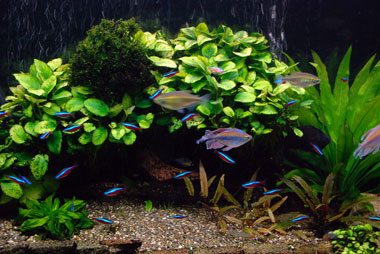
5 Steps To A Healthy Aquarium

A beautiful aquarium can bring hours of joy to the household, but it has to be well maintained and cared for to avoid dying or sick fish. It is useful to remember that an aquarium is essentially a miniature ecosystem and you have to keep this ecosystem balanced at all times.
Nutrition Make sure you know what type of fish you have and what you should be feeding it. Only feed them the recommended food and avoid overfeeding. Do keep in mind that fishes will need a variety of food to ensure they get all the nutrients they need. The eating habits of the fish species are divided into carnivores, herbivores and omnivores. Depending on their diet type, they can be fed 3 main categories of food, namely manufactured food (eg flakes), freeze-dried feeds (eg worms, shrimp) and live foods (eg maggots, feeder fish). For example, the omnivore Goldfish can be fed a variety of flakes, cooked peas, and insect larvae. A carnivorous Catfish eats worms and other live food as well as exotic stuff like beef heart. Few fish are completely herbivorous, but in general, most types of fishes include a significant amount of plants in their diet.
Pet Bites
A water pump is recommended for aquariums with more than 38 litres of water. The pump will clean out fish waste and leftover food and keep the water well oxygenated. If you have a saltwater aquarium, you will need to maintain the right level of salinity. You can check this easily with a hydrometer.
Pet Bites
Lighting This aspect is often neglected. Proper lighting is important for photosynthesis of the plants, to prevent algae growth and to emulate a natural setting for the fish. Most fish require about 12 hours of light daily. The different types of lighting (fluorescent, incandescent etc) would depend on your type of fish (saltwater or freshwater), presence of the type of plant life and reef.
Pet Bites